
A nostalgic and celebratory look back at one hundred years of passenger flight, featuring full-color reproductions of route maps and posters from the world’s most iconic airlines, from the author of bestselling cult classic Transit Maps of the World.
In this gorgeously illustrated collection of airline route maps, Mark Ovenden and Maxwell Roberts look to the skies and transport readers to another time. Hundreds of images span a century of passenger flight, from the rudimentary trajectory of routes to the most intricately detailed birds-eye views of the land to be flown over. Advertisements for the first scheduled commercial passenger flights featured only a few destinations, with stunning views of the countryside and graphics of biplanes. As aviation took off, speed and mileage were trumpeted on bold posters featuring busy routes. Major airlines produced highly stylized illustrations of their global presence, establishing now-classic brands. With trendy and forward-looking designs, cartographers celebrated the coming together of different cultures and made the earth look ever smaller.
Eventually, fleets got bigger and routes multiplied, and graphic designers have found creative new ways to display huge amounts of information. Airline hubs bring their own cultural mark and advertise their plentiful destination options. Innovative maps depict our busy world with webs of overlapping routes and networks of low-cost city-to-city hopping. But though flying has become more commonplace, Ovenden and Roberts remind us that early air travel was a glamorous affair for good reason. Airline Maps is a celebration of graphic design, cartographic skills and clever marketing, and a visual feast that reminds us to enjoy the journey as much as the destination.
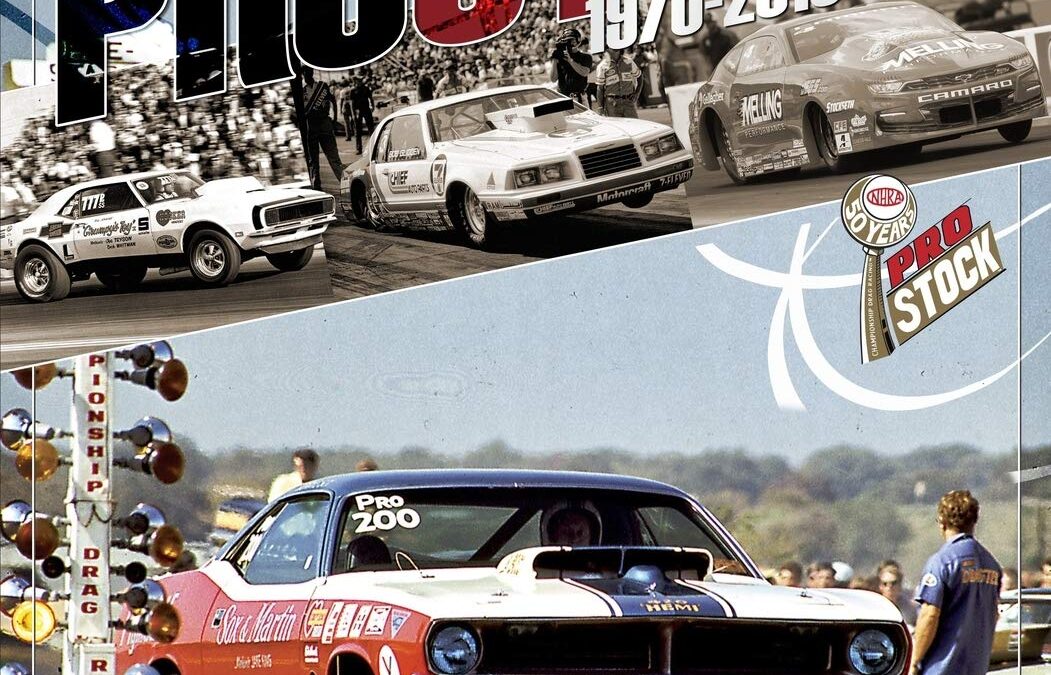
No collection of a true student of the sport will be complete without The History of NHRA Pro Stock. From the achievements of pioneers such as Bill “Grumpy” Jenkins and the famed Sox & Martin through season after season of utter domination by Bob Glidden to today’s six-second, 210-mph factory hot rods, The History of NHRA Pro Stock guides readers through the years of milestones, groundbreaking technology, and career turning points in this fascinating segment of NHRA competition. This newly revised and expanded edition covers the greatest moments in the 50 years of Pro Stock competition.

- The ultimate insider’s guide to Los Angeles; features interesting and unusual places not found in traditional travel guides
- Part of the international 111 Places/Shops series with over 650 titles and 3.8 million copies in print worldwide
- Appeals to both the local market (nearly 10 million call Los Angeles home) and the tourist market (over 42 million people visit Los Angeles every year)
- Fully illustrated with 111 full-page color photographs
- A revised and updated edition
“In Los Angeles, everyone is a star.” – Denzel Washington
For more than a century, seekers of sun and celebrity from around the world have flocked to this sprawling metropolis on the Pacific, which Dorothy Parker once described as “72 suburbs in search of a city.” But beyond the red-carpet reputation and Tinseltown trappings is a west coast wonderland teeming with unexpected cultural experiences, iconic architecture, gorgeous open spaces, quirky museums, hidden vistas, unconventional art, and obscure stories about the starlets, moguls, personalities, and players who have made Los Angeles their playground. This unusual guidebook explores 111 of the city’s most interesting and unknown places and experiences: wander a serpentine path in a spiritual quest of your own making; channel your inner cowboy at a tried and true honky tonk bar; pay homage to the Dude at the bungalow where the big Lebowski lived; turn your car tires into musical instruments on the country’s only ‘musical’ road; sleep with the ghosts of Marilyn Monroe and Charlie Chaplin; view a constellation of stars more vivid than anything Hollywood has to offer. From the San Gabriel Mountains to the Pacific Ocean, Angelenos and visitors will fall in love with the real Los Angeles. Adventures beckon. Surprises await. Just imagine how much more scintillating your dinner-party storytelling will be

Cursed awards, haunted estates, and deadly sets.
Hollywood is supposed to be the place where dreams come true, but it’s also where nightmares come to life. Spirits haunt the halls of renowned studios, legendary cafes, and lavish estates, while rumors of curses lurk in the shadows of the rich and famous. It’s said that stars like James Dean, Carrie Fisher, and Prince once predicted their own deaths, while slain screenwriter Paul Bern tried in vain to warn Sharon Tate about her own fate. Ghosts reportedly linger in the corners of the El Coyote Café and the Falcon Lair boasts sightings of Rudolph Valentino long after his death.
Join author and paranormal historian Brian Clune for a star-studded tour of the dark side of Hollywood.

The world will always remember Neil Armstrong and Buzz Aldrin for their first steps on the moon, yet few today hold in respect the sites that made these and other astronauts’ journeys possible. Across the American landscape and on the lunar surface, many facilities and landing sites linked to the Apollo program remain unprotected. Some have already crumbled to ruins–silent and abandoned. The Final Mission explores these key locations, reframes the footprints and items left on the moon as cultural resources, and calls for the urgent preservation of this space heritage.
Beginning with the initiation of the space race, the authors trace the history of research, training, and manufacturing centers that contributed to lunar exploration. From the early rocket test stands of Robert H. Goddard, to astronaut instruction at Meteor Crater, to human and primate experiments at Holloman Air Force Base, innumerable places proved critical to developing the equipment for exploring space, surviving the journey, and returning to Earth safely. Despite their significance to the history of human spaceflight, many landmarks face the threat of damage or destruction. Most alarming is that the rapid advancement of technology renders stations obsolete long before they are deemed worthy of preservation. Moreover, the lack of precedence for protecting off-planet artifacts poses a unique challenge for space archaeology. While NASA’s 2011 recommendations for spacefarers suggest avoiding close proximity to this cultural landscape, the authors advocate stronger routes of preservation and present models for safeguarding space history–both on Earth’s surface and beyond.

In the late 1970s, the problem facing any manufacturer taking part in the World Rally Championship was that the rules kept being changed at short notice. This book looks at the solutions found for Lancia’s rally car, the 037, and takes the reader through the new rules that all potential contenders would have to consider if they wanted to win rallies at World Championship level.
Lancia’s Rally was developed quickly to deal with the then-dominant Audi Quattro. The reasons it succeeded are featured here, along with an in-depth, behind-closed-doors look at the development of the car, with the close help and cooperation of its designer and chief engineer, Ing. Sergio Limone.
Here you can read how he decided on the basic configuration of the car, what the rules would allow, and how the project unfolded in total secret at Fiat’s various test tracks and centres in and around Turin, overlaid with rumour and counter-rumour as the world’s motoring press tried to make sense of what little knowledge it had of the project’s progress. In addition, Ing. Limone’s own photographs from areas never accessed by the public tell their own story. The focus then moves to the world of top-level rallying, with all the associated glory and headaches. Accompanied by stunning photography and insights from team members, we follow the small and nimble 037s, as the cars have become popularly known, as they head out to take the World Rally Championship for Makes in 1983 and innumerable wins throughout the world. In addition, there are tests of various key examples of the cars, and appendices of events and chassis used. This book is illustrated with 250 stunning and rare rally action photos.
Veloce Classic Re-Prtint

During the first half of the 1970s, two new fighter aircraft entered operational service in the United States: The Navy’s Grumman F-14 Tomcat and the Air Force’s McDonnell Douglas F-15 Eagle. These two aircraft were part of the backbone of the tactical air power of the United States; their introduction was accompanied by comprehensive reforms in pilot training as well as new technologies and weapon systems. In addition to the tactical significance of the two aircraft as innovative fighting platforms, however, their development and deployment should be viewed within a broad geopolitical and geostrategic context. Tovy explains how the F-14 Tomcat and the F-15 Eagle were an integral part of the aerial component of the conventional arms race within the Cold War. He argues that the trend of Soviet advanced weapon systems development created a perception of threat to the United States, challenging its conventional military power. Tomcats and Eagles explores how the Vietnam War accelerated the need for advanced fighter-interceptors, and that the lessons learned from aerial combat in Vietnam had a significant impact on the design and operational characteristics of the F-15. The author reveals that after F-14s were sold to Iran and F-15s to Israel in the second half of the 1970s, these jets were integrated into their armed forces, leading to Israel’s use of the F-15 during the First Lebanese War. Finally, the author provides an in-depth look at the operation of the F-14 and F-15 in U.S. actions in Southeast Asia, beginning with the Tanker Wars in the mid-1980s, through Operation Desert Storm and Operation Enduring Freedom, and ending with Operation Iraqi Freedom.

An event as significant for Alfa Romeo enthusiasts as the reopening of the marque’s historic museum at Arese – held in 2015, the year in which Alfa celebrated its 105th anniversary – could hardly be celebrated without a book.
The official catalogue of the new museum represents an opportunity to review the history of the marque and above all to accompany the reader/visitor around the new exhibition layout in which the cars have been thematically grouped and subdivided.
The glorious racing cars (from the P2 to the 33 in all their variants, through to the less successful cars that competed in F1) are brought together under the section VELOCITA’ introduced by Alfa Romeo driver Nino Vaccarella, while cars such as the 1759, 8C 2900, 6C 2500, 1900, Giulietta and Alfetta, along with the most recent production models, illustrate the most important episodes in the Biscione’s industrial history in the TIMELINE section – introduced by American journalist Nick Czap.
The section BELLEZZA – introduced by designer Lorenzo Ramaciotti, head of Style for the Fiat Group for years – focuses on the undisputed protagonists being cars such as the 33 Stradale, the Carabo and the Nuvola, milestones in the evolution of automotive styling.
A specific chapter also features all those models that do not appear in the exhibition.
The catalogue is an indispensable instrument for all those visiting this authentic temple of history, technology and culture.
This is the Soft Cover edition.

Everything there is to know about the iconic car: from technology to design, lifestyle, film, celebrities, and history
• The classic car from every angle: how a small car became a huge legend
• A new perspective and a sense of nostalgia: the perfect gift, not just for classic car fans
A classic, an icon, and much more than just a car. For many owners, the VW Beetle was practically a member of the family. For 65 years, the favorite car with its friendly exterior was a major part of the history of mobility. This fascinating book is a wonderful journey through time: emotional, nostalgic, and fascinating. From the very first model in 1938 to the final Beetle to roll off the production line in Mexico in 2003, from Herbie the iconic movie Beetle to quirky design variations, from the Beetle amphibious vehicle to the Beetle police convertible, we all associate this iconic car with a host of memories and even more emotions. And if you spend enough time leafing through this volume, you might just hear the distinctive sound of the boxer engine…

Illuminates the many facets of a legend on four wheels, with expert knowledge and exciting texts
• Exciting archive photographs and impressive photos by René Staud – his bestseller The Porsche 911 Book sold over 30,000 copies
To call it a legend is almost an understatement. After more than 50 years of model history, the one millionth Porsche 911 rolled off the production line in May 2017. The number of its fans is many times higher – because the “911” is the epitome of the sports car. Not only with its innovative technology, striking design and successes in major international racing events – from the 24 Hours of Daytona to the Monte Carlo Rally – has the Porsche 911 left and continues to leave a powerful tyre mark. The pop-cultural impact is also immense. Celebrities such as Arnold Schwarzenegger and Bill Gates have come out as enthusiasts. Steve McQueen drove it in the classic Le Mans. This exciting book covers design and model history, and includes the most important technical data.
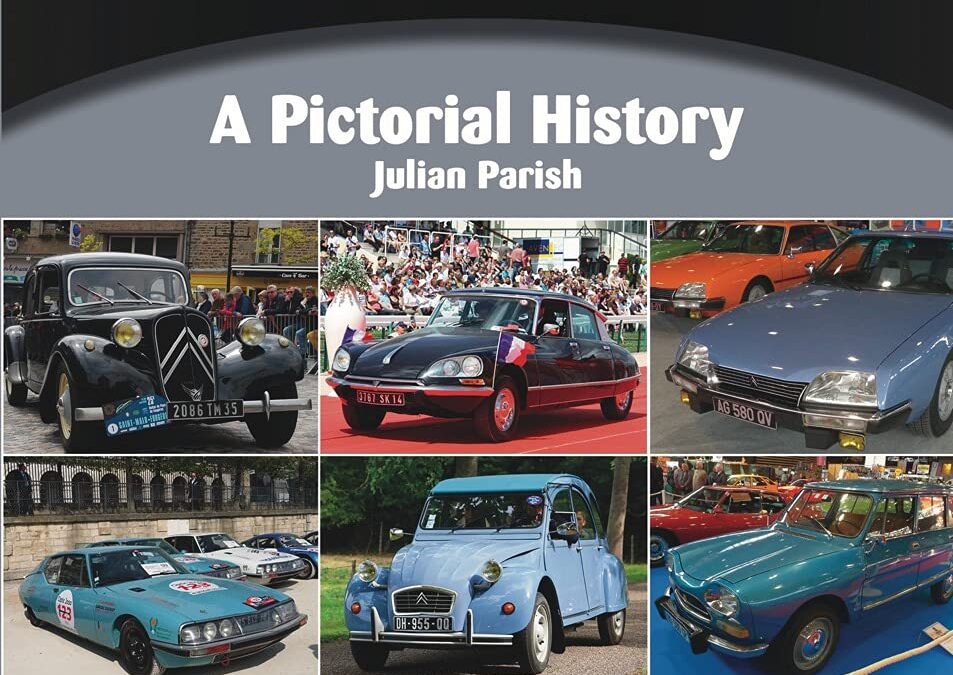
Of all the French car manufacturers, Citroën has the most enthusiastic following. During the half-century covered by this book, it produced the most technologically advanced cars of the time, including the Traction Avant, 2CV, DS and SM. This handy full-colour guide has individual chapters devoted to each of these models, together with the Ami, GS, CX, BX and the first models produced under Peugeot’s ownership. UK-built models and car-derived vans are included. Each chapter provides an introduction to the design and evolution of each model, as well as detailed technical information. Production numbers and dates are given, and there are details of special coachbuilt versions and limited editions. The guide is illustrated in full colour, with recent and archive photographs. Dashboard instrument layouts and gearchange patterns are also shown. Julian Parish is an experienced professional author and translator who has written on many makes of car, but his first car was a Citroën Dyane. He has lived in France for 25 years and has followed the marque at car shows and museums throughout the country.

Shelby American didn’t last long, but it was a flame that burned incandescently before being extinguished by corporate politics. In less than a decade, it created a legacy that will be revered as long as cars still roar around racetracks. Now, on the sixtieth anniversary of the founding of this iconic company, Shelby American: The Renegades Who Built the Cars, Won the Races, and Lived the Legend relates how the saga unfolded, as told by the men and women who were there at the time.
Although Carroll Shelby was the focal point of the publicity his company generated, Shelby American was staffed by a who’s who of racing legends, from Phil Remington and Ken Miles to Peter Brock and Carroll Smith. And while the shop is often depicted as a menagerie of Southern California hot rodders, it also embraced mechanics and fabricators from Canada, England, Switzerland, Australia, and New Zealand. Like the Cobra itself, the company magically came together as a whole that was greater than its constituent parts.
By incorporating the recollections of dozens of lesser-known crewmen, Shelby American goes behind the scenes to tell long untold and misunderstood stories―the cheat embedded in the turbine Indy car, the oiling woes that sunk the tunnel-port Trans-Am Mustang, even details about the build of the first Cobra in Dean Moon’s cramped garage in Santa Fe Springs. The book also delves into the personalities and hijinks that made Shelby American such a vibrant place to work, whether they were transforming humdrum Mustangs into race-ready GT350 or fighting shop wars with cherry bombs and M-80s.
Always standing above it all was Shelby himself. Dynamic, charismatic, mercurial, mercenary, and a little bit dangerous, he had to fight Ford bean counters as fiercely as he dueled with Enzo Ferrari. But for a few magical years, Shelby managed to beat both of them at their own games.
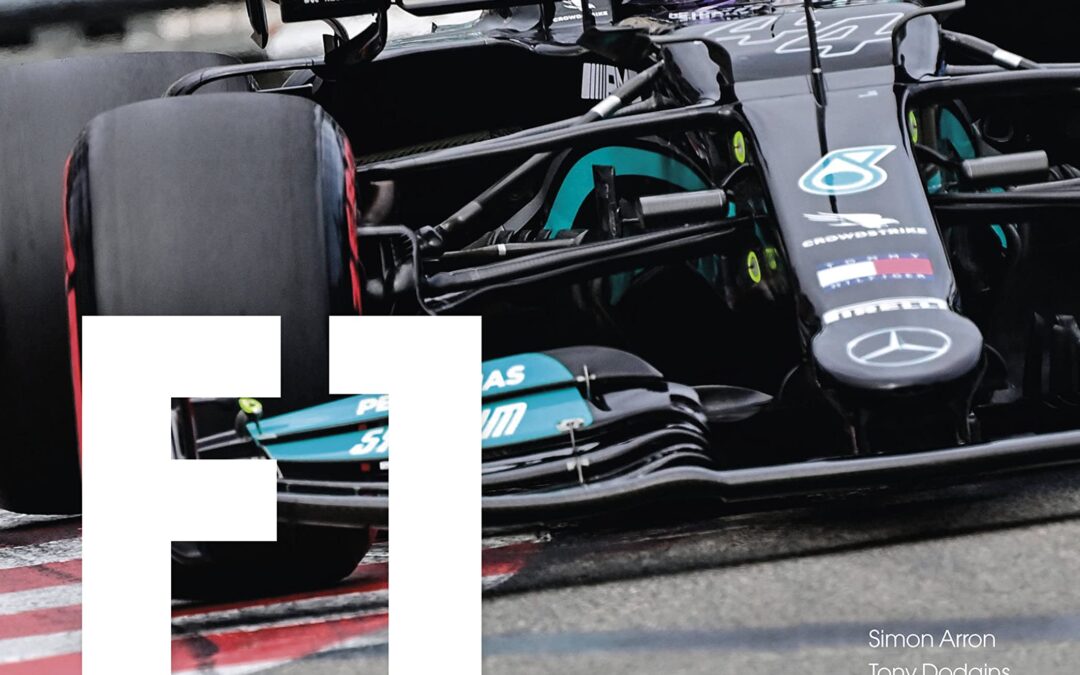
As Lewis Hamilton, Max Verstappen and Charles Leclerc battle it out head-to-head in the most hotly contested championship in years, this in-depth book, with a foreword from Haas team principal Guenther Steiner, tells the story of how the sport evolved into the exhilarating high octane spectacle it is today.
The new rules introduced in 2022 signal the greatest change to F1 in a generation, cracking the field wide open and seeing some of the most compelling and competitive races in the last 25 years.
Technical changes aimed at levelling the playing field for the teams combined with the sport’s tightening budget cap have made the races closer than ever. There will be more sprint races – trialed in 2021 – and greater fan interest driven by Netflix’s hugely successful ‘Drive to Survive’ series.
So, how did we get here? How did F1 become the acknowledged ‘Pinnacle of Motorsport’? Simon Arron and Tony Dodgins have identified the 100 most significant changes to the series since its inception in 1950. Formula One is unrecognizable from its debut season, where drivers raced around on old bomber training aerodrome in Northamptonshire with oil drums to mark the corners and straw bales the only concession to safety.
New fans will welcome a complete and highly illustrated guide to the history of F1, while older fans will be able to compare their own views of what were the pivotal moments of change, in a book written by experienced motoring writers with two lifetimes worth of knowledge of the sport.
The book will link technical progress with the personalities involved, indeed many of the swiftest changes have come about as a result of accidents or tragedies – the death of Roland Ratzenberger at Imola in 1994, the same weekend as Ayrton Senna, could have been avoided by the HANS safety device. The introduction of the halo saved Romain Grosjean’s life in Bahrain last year, but only came about because of the tragic accident that claimed Jules Bianchi in Japan.
Along with changes to circuits and the technology of the cars, this book highlights the commercial changes and the controversies that threatened to split the sport apart – such as the threat of breakaway series proposed at various times by teams.
A must-read for completists or for those new to the sport, F1: The Pinnacle is a fascinating insight into one of the most exciting and dangerous sports in the world.
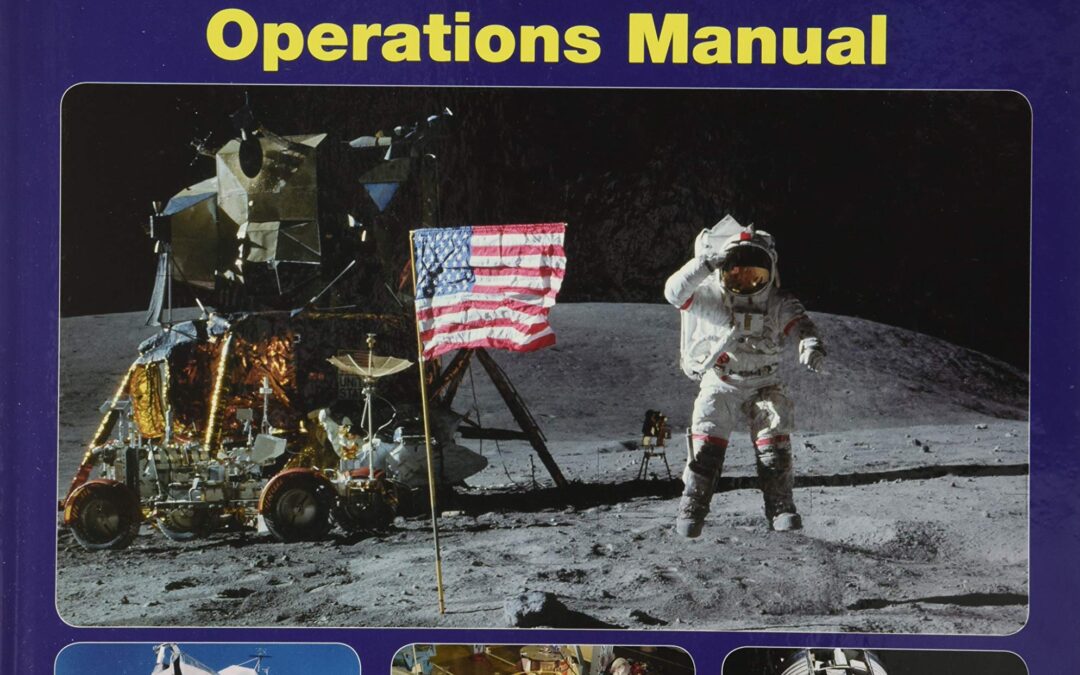
Published to coincide with the 50th anniversary of the first Moon landing by Apollo 11.
The story of Apollo has been told many times, but most accounts stop at the first landing. This book picks up where others have left off, and describes the five post-Apollo 11 Moon landings, defined as technical developments built upon engineering excellence. It was only through the robust design adopted when aerospace contractors first designed and built the Apollo spacecraft and the Lunar Module that successive evolutions were possible, taking lunar-landing operations far beyond what had first been envisaged.
This book is not intended to tell the full story of each mission, but rather to describe the technical development of spacecraft and equipment necessary to grow the capability from a single EVA
(‘moonwalk’) of less than three hours, to advanced missions where astronauts spent three full working days exploring their landing sites. With the aid of a Lunar Roving Vehicle, they collected a wide
variety of rocks and soil and left a range of instruments at the surface powered by a thermonuclear generator. As interest grows in humans returning to the Moon, 50 years on from those pioneering days of lunar exploration, we look again at what was accomplished at the dawn of the Space Age, spurred on by a political goal and developed as a tool for science.
The story of the Apollo Moon missions is an expression of those achievements.
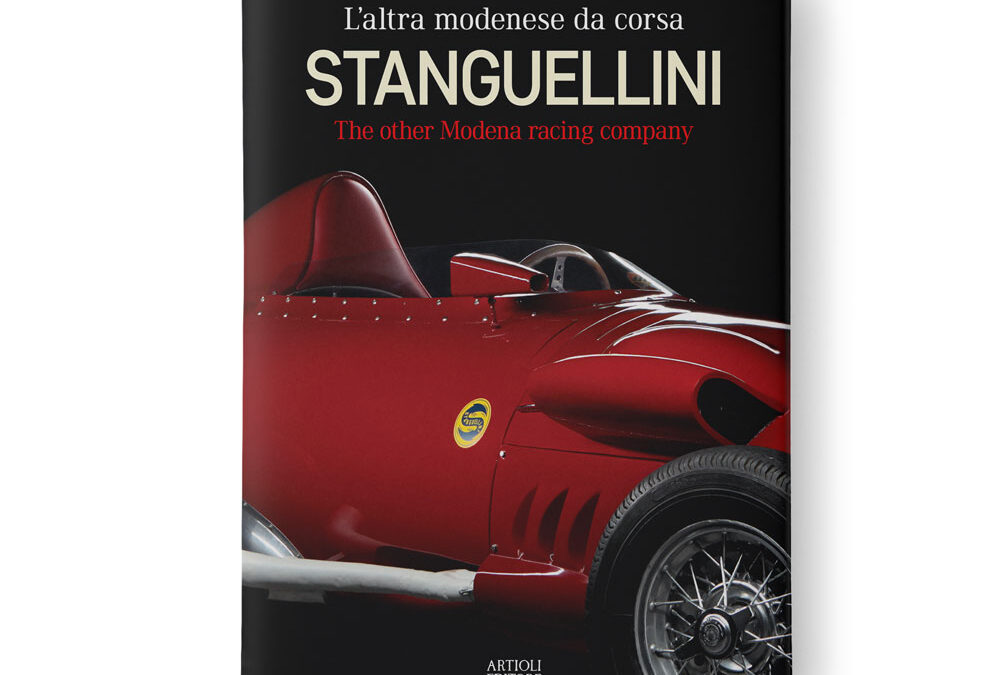
The first of the ten chapters included in the book is a bit of a provocation. In fact, it recalls how a ‘small’ Stanguellini Sport 1100 car, thanks to excellent road holding, beat the new and still ‘green’ Ferrari with a 12-cylinder engine of 1500 cc, in some races of the 1947 season, the debut one for the newly-founded Prancing Horse manufacturer. The ‘snub’ received from another Modena-based company, which was just as committed to the construction of sports cars, albeit with a smaller engine displacement, certainly annoyed Enzo Ferrari but in any case, he had very little to complain about. He had too much respect and friendship for the ‘Magician’ Vittorio Stanguellini, ever since the latter showed up in Modena racing circles in the company of his father Francesco, a pioneer of local motorsport. Stanguellini of Modena was a large family: in the second half of the 19th century, Celso, father of Francesco Sr., had founded a company for the construction of orchestral kettledrums with patented mechanical tuning. From there, it was a short step to the ‘mechanics’ of automobiles: Francesco Sr. became Fiat’s first representative in Modena, while his son Vittorio later extended the agreement with the Turin-based company, but his passion and technical ability also lead to the tuning and construction of racing cars as early as the early 1930s. Vittorio certainly knew his way around and he put together a small empire, based above all on the Sport 750 and 1100: the workshop in Viale Moreali, and later the larger one in Via Schedoni, become a worldwide benchmark, which from 1958/59 was confirmed with the construction of the Formula Junior cars (what would later become Formula 3), intended for up-and-coming drivers. The Stanguellini Formula Junior with a 90 hp Fiat 1100 engine and a top speed of 200 km/h was the most popular and successful car in the crowded category. However, the Formula Junior regulations required that the engine was derived from a production car, albeit with a wide range of tuning possibilities. As he was linked to Fiat, in the 1960s Vittorio Stanguellini, now flanked by his son Francesco Jr., built some Formula Junior (including the modern ‘Delfino’) and then Formula 3 single-seaters, with engines derived from the ‘1300’ and ‘124’ of the Turin-based company. Thanks to the copious archive material of the brand (photographs and documents), the book reconstructs in detail the history of the manufacturer from the blue ‘S’ on a yellow background (the colours of Modena), summarized by the extensive Museum, set up at the time by Francesco and now impeccably curated by his daughter Francesca: fifth generation of the ‘racing’ Stanguellini family. A chapter of the book is dedicated to the Museum and it is basically a ‘guided tour’ of the cars and the curiosities it hosts. The same cars, perfectly restored, were photographed outside in a spectacular way and can be admired in the ‘portfolio’ combined with the same book.
Hardcover
English and Italian Text
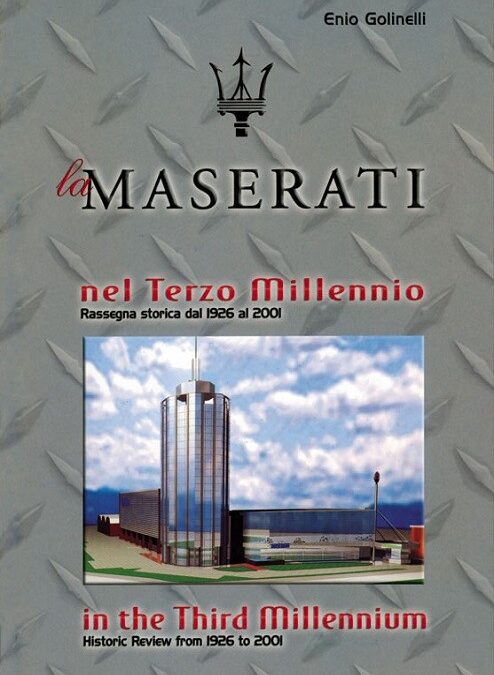
Photographs and texts make up an album full of stories and passion. With his 25 years of experience in the Modenese company that has become one of the most prestigious brands in the world, Enio Golinelli is able to provide an all-round picture on the aspects of vehicle construction and design, following the evolution of the models with punctuality, techniques and challenges. Alongside this, specific reviews are dedicated to sporting or demonstration events of particular interest for Maserati, and an entire section of the volume collects vintage photos that allow us to reconstruct the roots and the protagonists of a sporting and mechanical adventure that made Maserati a dream all over the world.
“Maserati was born in 1914 from the passion and courage of six brothers who bore this name. […] The success led them to grow up to produce racing cars capable of winning Grand Prix and even the most legendary of races: the Indianapolis 500 … “(Enio Golinelli)
Text Italian and English
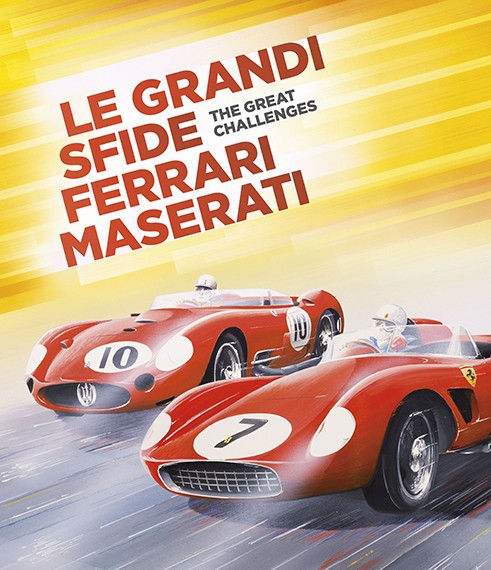
Ferrari and Maserati, a rivalry entirely made in Modena which began around 1926, when the Maserati brothers built their first racing car in Bologna. From 1929, the rivalry became direct, even though it was Maserati against the Alfa Romeo of the Scuderia Ferrari. In 1947, Enzo Ferrari became a manufacturer, following in the footsteps of the Maserati brothers who, in the meantime, had moved to Modena. For Ferrari it was the dream of a lifetime come true and the end of any envy towards who had been manufacturers right from the start.
During the 1950’s, if the Ferrari drivers did not stand on the podium then the Maserati drivers did. The results of the rivalry until 1957, when Maserati terminated its direct involvement in races, highlight three F1 World Drivers’ Championships and four Sports, three Mille Miglia, one 24 Hours of Le Mans for Ferrari. The Maserati record book shows one F1 World Drivers’ Championship and a long list of victories in races worldwide.
However, this is not the whole story. A wider panorama is exhibited here, through the iconic cars of that rivalry.

A talented man is portrayed by his most famous and unforgettable quotations, mottos, wise sense of humour: simple but deep words and wise and direct statements characterize him. Enzo Ferrari, the man who made his childish dreams come true, recreates the essence of the prancing horse through his passionate words. In his book, the “red” Ferrari, a myth of the contemporary world, thus becomes a symbol of human values, and the dynamic rhythm of the aphorisms proves to be the hallmark of an engine designed to win. The texts are enriched with images.
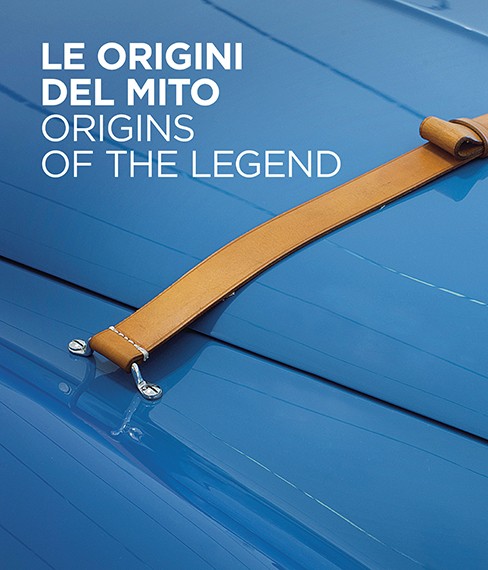
Interpreting the car racing world in a revolutionary way first with the Alfa Romeos of Scuderia Ferrari and, immediately thereafter, with the Touring Superleggera-bodied Ferrari 166, Enzo Ferrari was the creator of the racing car decked out as a Grand Tourer, a road car that, with just a few tweaks, was instantly ready for the track: the dream of every gentleman driver.
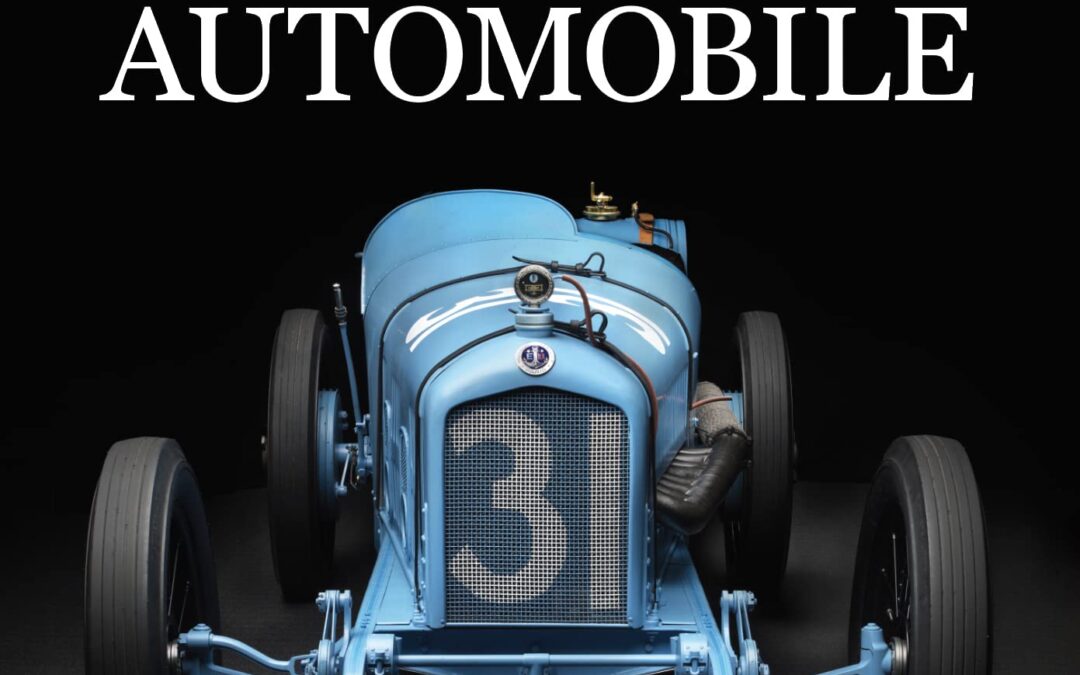
In the last one hundred years, cars have shaped our lives. Other everyday cultural artifacts, such as watches, telephones, musical instruments, and televisions, have certainly had influence, but the car is by far the most significant. Now, change is coming for the car, as it is for so many other industrial artifacts. Once, cars were distinct machines. Now, they are evolving into multifunctional digital devices. New fuels, new modes of travel, and new technologies are disrupting the traditional role of the much-loved family car.
What is to become of this material legacy? Should we really let go of it? Without memory, personal and shared, we lose our way, our individuality, and our culture. This proposition is at the heart of The Archaeological Automobile.
Miles C. Collier’s landmark approach uses an “archaeological mindset” to interpret the automobile as a cultural artifact in six themes:
The Development of the Automobile describes how the car emerged from a pressing human need for mobility, tracing our relationship with horses, our invention of the bicycle, and how we turned our backs on both as daily transport for the allure of the car.
The Rise of the Collectible Automobile asks how and why ratty relics decaying in recycling yards can become valuable and treasured collectibles. It reveals the effect of cultural influences on our perception of cars and on the dynamics of the collector car market.
The Archaeological Mindset picks up a wrench, gets into the workshop, and tracks the restoration of a 1919 Ballot Indy car using hands-on experience and background research while deploying the “archaeological imagination.” The archaeological clues are in the detail.
Collecting and the Archaeological Automobile deals with the characteristics of collecting. Why do we accumulate “stuff”? Is it greed? Is it passion? Is it a desire for legacy? And what makes a “good” collection? Is it bling? Is it style? Is it material worth? The answer lies in connoisseurship.
Restoring the Archaeological Automobile debates the merits of diverse restoration strategies and the reasoning behind them, including the tricky question of how to repaint the tilt-front nose of a 1964 Alfa Romeo GTZ racing car and still preserve the evidence of forty years of accumulated sandblasting and chipping.
The Archaeological Automobile of the Future is a call to action. Cars as we know them are customarily trashed, government regulations encourage indifference, and the skills and knowledge associated with fixing them are slowly vanishing as we lose older generations of experienced craftsmen. How can we preserve humanity’s treasure trove of automotive knowledge for generations to come?
Filled with engaging stories and practical examples, this is a handbook of the most thoughtful practices, not just for automobile owners and the historical car industry, but for collectors, professionals, and users of all kinds of industrial era artifacts.
The Archaeological Automobile combines scholarship, pertinent anecdotes, style, and experience to provide a stimulating account of why we should all be archaeologists now.




















